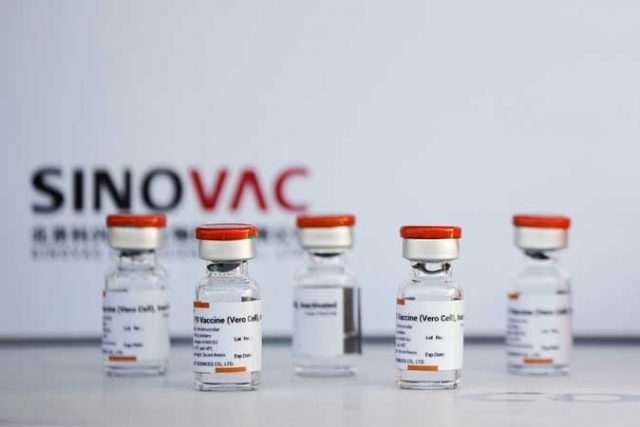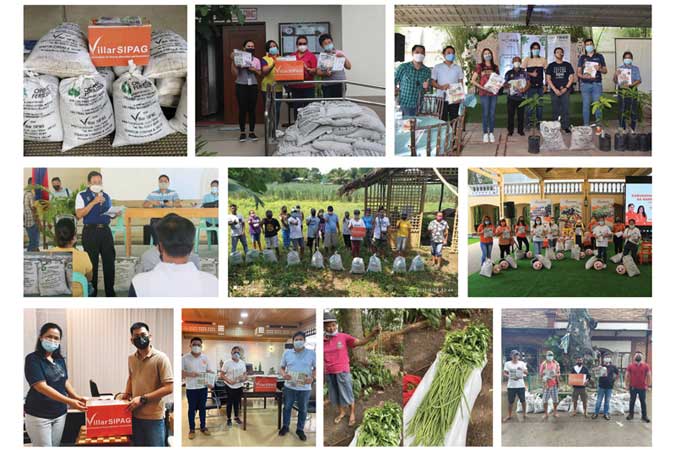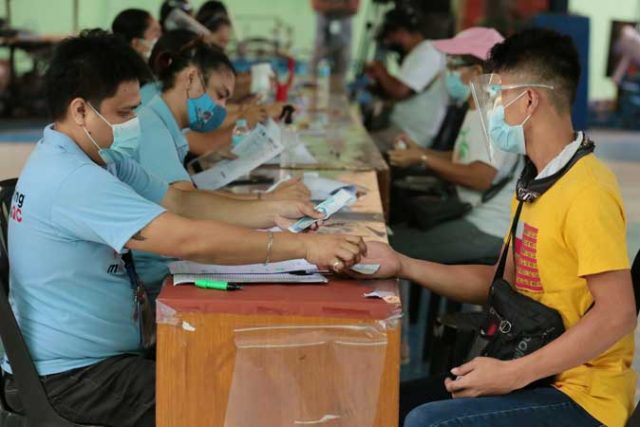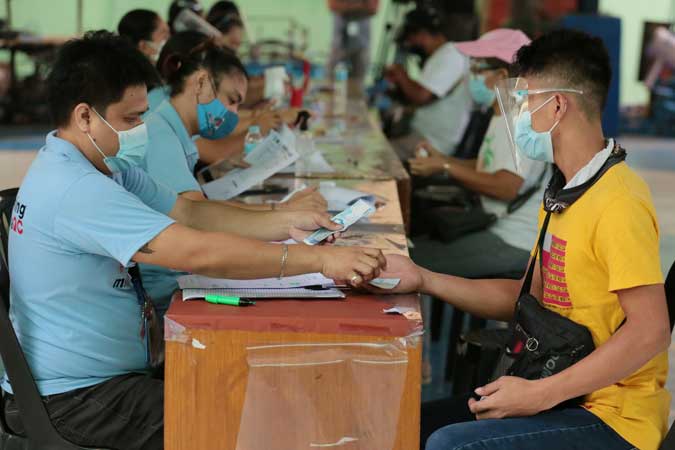JAMES B. SANTOS (not his real name), 24, was diagnosed with a general anxiety disorder in December amid a coronavirus pandemic.
“Seeing so many of my friends getting sick from the coronavirus was scary,” he said in an e-mail. “The lockdown made me feel tired and anxious about what’s going to happen to me. I’m now taking medication to control my condition.”
At least 3.6 million Filipinos suffer from one kind of mental, neurological and substance use disorder, the Health department has said, citing a study by the World Health Organization (WHO).
 The mental health impact of the pandemic will be “long-term and far-reaching,” the WHO said in a statement last month, as experts and leaders sought action on pandemic-linked anxiety and stress. “Everyone is affected in one way or another.”
The mental health impact of the pandemic will be “long-term and far-reaching,” the WHO said in a statement last month, as experts and leaders sought action on pandemic-linked anxiety and stress. “Everyone is affected in one way or another.”
Patients with mental health disorders are two times as likely to die from COVID-19, according to a study published in JAMA Psychiatry last month.
Bernard B. Argamosa, program director at the National Center for Mental Health, said they have been receiving more distressed calls at their hotline during the pandemic that has infected 1.65 million and killed almost 30,000 people in the Philippines.
When the hotline started in May 2019, the average callers in the first six months hit as many as 400. During the first few months of the lockdown that started in March last year, the number of callers doubled to as many as 700 a month, he said.
This further increased by five times in the third quarter of last year, with about 1,400 calls a month, Mr. Argamosa said. It peaked at 1,600 calls in March.
“During the third quarter of 2020, we noticed that the primary reasons for calling were anxiety and depression, which were exacerbated by the pandemic,” he said in a Zoom Cloud Meetings interview.
“The uncertainty of it, the job losses, the lockdown — those are the primary reasons why they’re calling,” he added.
Suicide-related calls also accounted for a third of the calls this year, up from 10% when the hotline started.
A study by mental health firm MindNation released in June found that 53% of Filipino workers had experienced mental health challenges during the global health crisis.
These include fears about getting infected with the coronavirus, financial pressures, personal problems, work pressure, and trying to juggle work and family matters.
“Now that the boundaries between personal life and work are blurred with people working from home, employees are working more than they did pre-pandemic when they were onsite with colleagues,” according to the report. It added that almost half of employees feel they have too much workload.
MindNation, which conducted the study in September 2020 to April 2021, found that workers were lacking focus and concentration and felt they no longer enjoyed things that made them happy in the past. They also had low self-confidence and had a hard time sleeping.
The study also found that 13% of workers took a leave of absence due to mental health problems, while 35% had productivity issues, losing an average of two hours daily. A quarter of those polled said they were thinking about quitting their jobs.
It also said these mental health and well-being challenges cost companies P7 million a year for 10,000 employees.
‘ABNORMAL CONDITIONS’
Cornelio G. Banaag, vice-president of the Mental Health Association of the Philippines, Inc., said the requests for appointments during the lockdown increased, mostly concerns about depression, anxiety, suicidal behavior, difficulties in school, lack of motivation and parents getting upset.
“It’s increasing, it’s not getting less,” he said. “It’s very difficult to adjust. We’re trying to be normal under very abnormal conditions. These conditions are very abnormal for all human beings, especially for Filipinos who love connections.”
Mr. Banaag traced most mental health problems to uncertainty and social isolation. Many Filipinos have had to endure being away from their families, relatives and friends once they get infected with the virus.
“Uncertainty has removed our sense of control over our lives,” he said. “We don’t know when this is going to end.”
Mr. Argamosa said people should not forget to go back to the basics, including following health protocols and cultivating relationships with family and friends. “We can be physically distant, but it is important to maintain our social connectedness.”
He said Filipinos are known to be resilient, and hope would help them cope during the health crisis. Spirituality could also help them survive the pandemic.
The speedy rollout of vaccines could ease the anxiety of people, he said. “What is distressing for all of us is the uncertainty and the fear that this might continue for years. If we start to believe that things will get better, it will be a big help.”
To cope with the pandemic, people should take care of their physical well-being, which is the foundation of good mental health. Aside from getting at least six hours of sleep and eating healthy food, creating new routines — which were taken away from them during the lockdown — would help them deal with stress.
“It helps us predict that at a certain time this is what we will do, which restores some amount of predictability and control in our lives,” Mr. Banaag said.
He also said “the mind is our best ally, but it can also be our worst enemy.” People should avoid negative thoughts and feed the mind with positive thinking.
“Let’s not be too hard on ourselves. We have to accept that these times have imposed limitations on the things that we can do. We are trying our best to live as normal as we can under abnormal circumstances and therefore, there will be mistakes,” he said.
Mr. Santos, mentioned at the outset, said he tries to deal with the anxiety by getting behind the wheel and taking a time off. He also practices breathing exercises, avoids overthinking, and takes things “one step at a time.”
But when help is needed, one should seek help, professional or otherwise, he said.
“Don’t be worried about the stigma of consulting a shrink,” he said. “Your mental health and well-being should always be the priority. You should seek help from people around you.” — VMMV












 The mental health impact of the pandemic will be “long-term and far-reaching,” the WHO said in a statement last month, as experts and leaders sought action on pandemic-linked anxiety and stress. “Everyone is affected in one way or another.”
The mental health impact of the pandemic will be “long-term and far-reaching,” the WHO said in a statement last month, as experts and leaders sought action on pandemic-linked anxiety and stress. “Everyone is affected in one way or another.”

